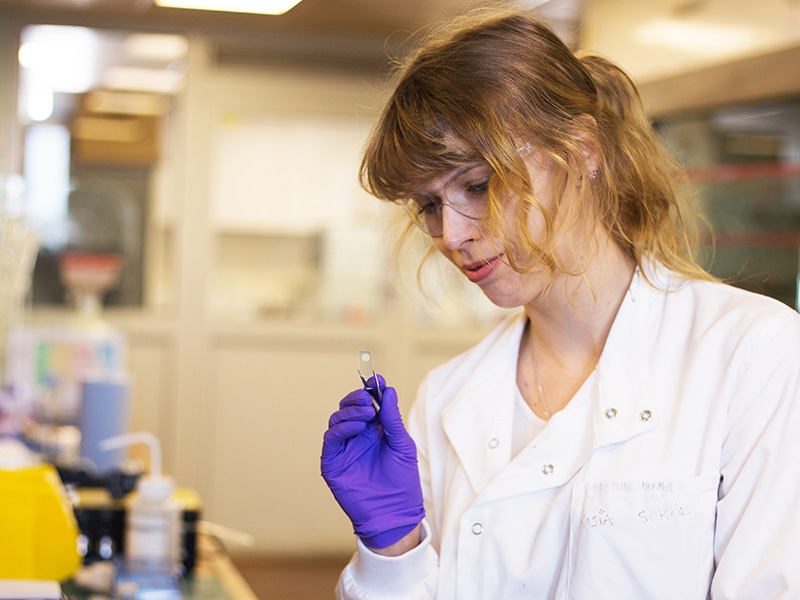Sep 6 2018
The mission to find new methods to harness solar power has progressed further after scientists successfully split water into hydrogen and oxygen by modifying the photosynthetic machinery in plants.
 Katarzyna Sokół in the Reisner laboratory in Cambridge. (Image credit: Andreas Wagner)
Katarzyna Sokół in the Reisner laboratory in Cambridge. (Image credit: Andreas Wagner)
Photosynthesis can be defined as the process used by plants to convert sunlight into energy. Oxygen is formed as a by-product of photosynthesis when the water absorbed by plants is ‘split’. It is one of the most vital reactions on the planet as it is the source of virtually all of the world’s oxygen. Hydrogen which is formed when the water is split could possibly be a green and limitless source of renewable energy.
A new research, led by academics at St John’s College has used semi-artificial photosynthesis to investigate new ways to create and store solar energy. They used natural sunlight to change water into oxygen and hydrogen using a combination of manmade technologies and biological components.
The study could currently be used to transform the systems used for the production of renewable energy. A new paper, reported in Nature Energy, describes how academics at the Reisner Laboratory in Cambridge developed their platform to realize unaided solar-driven water-splitting.
Their technique also managed to accomplish more efficient absorption of solar light than natural photosynthesis.
Natural photosynthesis is not efficient because it has evolved merely to survive so it makes the bare minimum amount of energy needed - around 1-2 percent of what it could potentially convert and store.
Katarzyna Sokół, First Author and PhD student at St John’s College
Artificial photosynthesis has been available for years but it has not yet been effectively used to produce renewable energy as it depends on the use of catalysts, which are mostly expensive and poisonous. This means it cannot yet be used to widen findings to an industrial scale.
The Cambridge research is part of the evolving field of semi-artificial photosynthesis which aims to overcome the restrictions of fully artificial photosynthesis by employing enzymes to get the anticipated reaction.
Sokół and the team of researchers not only enhanced on the amount of energy formed and stored, they succeeded in reactivating a process in the algae that has been latent for millennia.
Hydrogenase is an enzyme present in algae that is capable of reducing protons into hydrogen. During evolution, this process has been deactivated because it wasn’t necessary for survival but we successfully managed to bypass the inactivity to achieve the reaction we wanted – splitting water into hydrogen and oxygen.
Katarzyna Sokół, First Author and PhD student at St John’s College
Sokół anticipates the findings will enable new groundbreaking model systems for solar energy conversion to be designed and made.
It’s exciting that we can selectively choose the processes we want, and achieve the reaction we want which is inaccessible in nature. This could be a great platform for developing solar technologies. The approach could be used to couple other reactions together to see what can be done, learn from these reactions and then build synthetic, more robust pieces of solar energy technology.
Katarzyna Sokół, First Author and PhD student at St John’s College
This model is the first to effectively use hydrogenase and photosystem II to produce semi-artificial photosynthesis driven only by solar power.
Dr Erwin Reisner, Head of the Reisner Laboratory, a Fellow of St John’s College, University of Cambridge, and one of the paper’s authors labeled the research as a ‘milestone’.
He explained: “This work overcomes many difficult challenges associated with the integration of biological and organic components into inorganic materials for the assembly of semi-artificial devices and opens up a toolbox for developing future systems for solar energy conversion.”